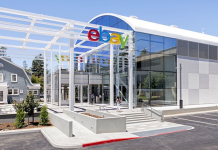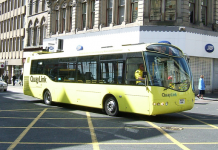Tom Konrad CFA
On June 21st, leading North American heavy-duty transit bus manufacturer New Flyer Industries (TSX:NFI, OTC:NFYEF) announced the acquisition of its third largest competitor, North American Bus Industries [NABI] from private equity firm Cerberus Capital.
The following Monday, New Flyer management held a call to discuss the acquisition with analysts. Here are the highlights.
Cost and Financing: The C$84 million cost to New Flyer consists almost entirely of the assumption and discharge of NABI’s existing debt. This will be funded with C$64 million by issuing to the world’s second largest bus maker Marcopolo S.A. for C$10.50 a share (above the current market price) under the strategic investment agreement announced in January. An additional C$20 million will be funded using New Flyer’s term loan facility, which has been expanded to reflect the merged company’s larger size.
Effect on Revenues: The combined company’s trailing 12 month (TTM) were C$1,222 million, an increase of 37% over New Flyer’s alone.
Effect on EBITDA: The combined company’s TTM EBITDA would be C$81 million, a 35% increase over New Flyer’s alone. The transaction should also increase EBITDA and earnings per share.
Leverage: The mostly equity financing should increase New Flyer’s financial strength, lowering its debt-to equity ratio from 2.8x to 2.2x.

Effect on Competition and Regulatory Scrutiny: Although the transaction will reduce the major players in the North American transit bus market to only three, management took pains to emphasize that the market will remain competitive. The transaction will not face scrutiny from US competition authorities because all the proceeds were for the satisfaction of NABI’s outstanding debt.
The combined entity has approximately 42% of the new transit bus market and 34% of the aftermarket parts market.
Synergies: New Flyer does not plan layoffs, and emphasizes that the acquisition will be accretive to earnings without any cost reduction. NABI has just been through a multi-year reorganization which removed significant inefficiencies, such as the construction of bus chassis in Hungary for shipment to the US, and the discontinuation of single-customer bus models.
That said, New Flyer expects significant improvements in the efficiency in the combined aftermarket parts operations of New Flyer, NABI, and Orion (acquired earlier this year.) This will arise mostly from access to the proprietary parts databases of both Orion and NABI, which should allow all three to carry smaller inventories and meet customer needs more effectively.
New Flyer also anticipates the the larger aftermarket parts and service division will be able to provide more attractive service options for customers, and this may improve the competitiveness of it bids for new bus orders.
 New Flyer will also not have two Low Floor Transit bus models (NABI’s LFW and its own Excelsior) with different cost structures, which it will be able to fine tune to be competitive with different types of customers. Although these two bus models can be direct competitors, it sounds to me like the LFW had the advantage in smaller, lower frills bids, although management took pains to deny that NABI’s advantage arose simply because it is “cheaper” to manufacture buses in Alabama than at New Flyer’s facilities in Winnipeg, Manitoba and St. Cloud Minnesota.
New Flyer will also not have two Low Floor Transit bus models (NABI’s LFW and its own Excelsior) with different cost structures, which it will be able to fine tune to be competitive with different types of customers. Although these two bus models can be direct competitors, it sounds to me like the LFW had the advantage in smaller, lower frills bids, although management took pains to deny that NABI’s advantage arose simply because it is “cheaper” to manufacture buses in Alabama than at New Flyer’s facilities in Winnipeg, Manitoba and St. Cloud Minnesota.
The merger will expand New Flyer’s offerings with a specialized Bus Rapid Transit (BRT)model stainless steel bus frames. The BRT model is appealing to certain customers wanting a more unique or custom look.
New Flyer previously only offered industry standard carbon steel buses. Stainless steel may be preferred by some customers over carbon steel because of longer life and lower maintenance, especially in cold and humid climates with significant salt exposure. This PDF for more about the relative advantages of stainless steel also claims that stainles steel has the potential to significantly reduce bus weight and manufacturing costs.
Conclusion
Management says “It’s an understatement to say we’re excited by this.” I think investors should be excited, too. I added slightly to my already large position Friday evening, right after the deal was announced. NABI is already a profitable bus business acquired at a price which should increase New Flyer’s earnings per share and allows the company to be competitive when bidding for both new bus and service contracts wit ha broadened and strengthened offering.
The potential synergies from controlling more than a third of the higher margin aftermarket parts and service business are particularly exciting, and I expect New Flyer will see both significant price reductions and growing market share is this counter cyclical segment of the transit bus market.
Disclosure: Long NFI
This article was first published on the author’s Forbes blog on June 24th.
DISCLAIMER: Past performance is not a guarantee or a reliable indicator of future results. This article contains the current opinions of the author and such opinions are subject to change without notice. This article has been distributed for informational purposes only. Forecasts, estimates, and certain information contained herein should not be considered as investment advice or a recommendation of any particular security, strategy or investment product. Information contained herein has been obtained from sources believed to be reliabl
e, but not guaranteed.






